Are you a bird lover? Are you currently using the unit study method or approach? Have you ever done a unit study? If you aren't sure what a unit study is click here to find out more.
I don't usually teach using a unit study approach but the method has always been of interest to me and the concept is still fairly new to me. The Schoolhouse Review Crew had the opportunity to review Once-a-Week-Units created by Sharon Gibson which are available through Homeschool Legacy. We were able to choose one digital download in e-book format from a list of ten choices. I chose the four-week "Birds of a Feather" unit study. Click on the title to see what concepts will be covered. It was the perfect supplement to our science curricula - it was as if they were meant to be used simultaneously. Not to mention, most children love to learn about animals ... and birds obviously fall in that category. This unit is meant for children in grades 2-12 and costs $15.95. You will not receive an e-book as I did; the physical hard copy of the product will be mailed to you. This comprehensive bird study contains 56 pages and several of those pages are blank spacer pages. The unit begins with an introduction as to why you should do once-a-week unit studies and is divided and organized into four weeks covering broad topics such as bird basics, backyard habitat, bird identification, ornithology, and birds of prey. These topics are broken down further into more specific topics for each week. The author also gives you scheduling tips to help you incorporate the unit into your day. An informative article titled "Getting the Most Out of Your Once-a-Week Unit Study" was found at the back of the unit. I felt this article should have been placed towards the front of the unit so that it would be read before beginning the study. At first, I was wondering how will I know which activities are daily and which are once-a-week? Well, it was clearly labeled in bold print. Each activity was also outlined in bold print and underlined making it easier to find. Alyssa is well below the grade level, but I was curious if the activities could actually be used with younger children. In the end, the unit study was a success and few adaptations were necessary.
Other Products at Homeschool Legacy
Once-a-Week-Unit Studies currently available:
- Birds of a Feather $15.95
- Forest for the Trees $15.95
- Horsing Around $15.95
- Weather on the Move $19.95
- Knights and Nobles $15.95
- Native America $17.95
- Early Settlers $17.95
- Revolutionary Ideas: The Story of the American Revolution $19.95
- We the People: getting to Know Your Constitution $19.95
- Christmas Comes to America $15.95
- Lewis and Clark: From Sea to Shining Sea $19.95
Read Homeschool Legacy's Shipping Policy here.
How We Used It
This unit study was used in conjunction with our science curricula and nature studies. It was used with my daughter who is almost five years old. We involved her father in as many activities as possible. Sunday was devoted to scripture time - this was the start of each week for us. We read the indicated verses from the Bible. We enjoyed the read-alouds and several of the referenced library books throughout the week. We decided to watch the movies on Monday and our main unit day was scheduled on Tuesdays. We aimed at completing as many activities possible on that day and continued the remaining activities throughout the week if necessary. I tried to have a more relaxed teaching approach with this unit study. The plan was to implement this study once-a-week as intended ... to stop all other studies for one whole day. We couldn't always finish all of the activities in one day partly due to my daughter's age, the fact that we were moving, and because I had a hard time eliminating subjects from the day. Younger children will obviously need more time to research and write. I didn't want to rush either process. Many times, I ended up spreading out the activities throughout the week over four or five days, because we were packing for a move. This seemed to work out for the best. Alyssa retained the information better when we did fewer activities in a day. We tried the "once-a-week" approach for two weeks. I do feel that the unit activities could definitely be done "once-a-week" with older students within the grade range. Our field trips were taken on Friday, Saturday, or Sunday. I loved the fact that the unit also had a list of read-alouds for non-readers. At times, Alyssa would use the listed books as independent readers. One thing we often neglected or forgot to do was the "Stump Your Dad Trivia."
Our Experiences
I will do my best at explaining our experiences with this fabulous and thorough unit study. I have so much to say about the unit, so I am warning you this will be a long review with lots of photos. My apologies ... but I wanted to share a few stories, lots of photos, and a weekly blurb. I was extremely pleased and impressed with the activities. First of all, our focus was on specific topics and not on meaningless information. The unit study contains research projects which helps children learn how to locate information independently. We used a variety of resources and tools to research topics including encyclopedias, science dictionaries, books, online galleries, online encyclopedias, and several other informative websites about birds. You will notice that the unit tends to lean on the writing intensive side including compositions, listing, labeling, descriptions, and journaling.
I will do my best at explaining our experiences with this fabulous and thorough unit study. I have so much to say about the unit, so I am warning you this will be a long review with lots of photos. My apologies ... but I wanted to share a few stories, lots of photos, and a weekly blurb. I was extremely pleased and impressed with the activities. First of all, our focus was on specific topics and not on meaningless information. The unit study contains research projects which helps children learn how to locate information independently. We used a variety of resources and tools to research topics including encyclopedias, science dictionaries, books, online galleries, online encyclopedias, and several other informative websites about birds. You will notice that the unit tends to lean on the writing intensive side including compositions, listing, labeling, descriptions, and journaling.
WEEK ONE
The topics we addressed were bird basics and your backyard bird habitat.
The topics we addressed were bird basics and your backyard bird habitat.
We had so much fun this week! What a way to start a unit! My husband did not realize that we were supposed to build the bird feeders and birdbath. When I told him about the bird unit, he surprised us the next day with a concrete birdbath and feeder. We eventually made several of the suggested bird feeding stations. I could see the joy in Alyssa's eyes when creating the pinecone feeder which was her favorite one to make. We immediately set up the bird habitat and the next day we had birds in the backyard. I was thrilled! I was a little worried because it can take weeks for birds to arrive and we were moving soon. I was hoping we wouldn't have to wait two weeks to see a bird. My daughter is not an early riser, but once I told her she was more likely to see them in the morning ... she woke up early on several occasions to observe them during the cool morning hours. Some days we spent the morning observing the birds from the stairs (she often wanted to do this before eating breakfast). Other days, she'd wake up watching them with her binoculars through her bedroom window for an hour. She came running to me one morning in her pajamas and winter boots asking for paper, pencil, and crayons. She drew a picture of the bird feeding station and birds that visited her that day. We have seen cardinals, wrens, pigeons, tufted titmouses, hummingbirds, and doves. I believe we also saw both bluejays and bluebirds, but I am not 100% sure. We have a few others that we can't quite identify yet. The birds are really skittish so they fly away when we try to get closer. We had a blast creating our feeding station scarecrow!
We were unable to obtain many books on the suggested book list. We were able to eventually get the weekly read aloud as an interlibrary loan but we fell behind in reading it. At first, Alyssa was disinterested in the book and was easily distracted. As the story progressed, she became more interested and attentive. She started to enjoy the story questioning aspects and responding to it. I changed certain wordings that we don't like to use in our household as I read aloud such as the word "stupid." We also had a few discussions about character traits and behaviors at the end of each chapter.
Alyssa researched information about our state bird and why it was chosen. She colored our state bird and labeled it on a North American Mockingbird notebooking page we found. She wanted to write a sentence about the bird, but the line was too short. We decided to create a nature study binder or "journal" to organize her completed work.
We were unable to obtain many books on the suggested book list. We were able to eventually get the weekly read aloud as an interlibrary loan but we fell behind in reading it. At first, Alyssa was disinterested in the book and was easily distracted. As the story progressed, she became more interested and attentive. She started to enjoy the story questioning aspects and responding to it. I changed certain wordings that we don't like to use in our household as I read aloud such as the word "stupid." We also had a few discussions about character traits and behaviors at the end of each chapter.
Alyssa researched information about our state bird and why it was chosen. She colored our state bird and labeled it on a North American Mockingbird notebooking page we found. She wanted to write a sentence about the bird, but the line was too short. We decided to create a nature study binder or "journal" to organize her completed work.
WEEK TWO
The focus for week two was bird identification.
The focus for week two was bird identification.
The book choices were limited again this week. We were unable to obtain the family read aloud book in time. Many more birds gathered around our feeders and bath. It has been a joy seeing Alyssa so full of excitement.
Yesterday, we were at a lady's house purchasing books. Alyssa couldn't stop talking about our feeding station and her observations. Alyssa saw a feeder in the lady's yard and she made an immediate connection. The lady said, "You are doing a great job teaching her ... her excitement for what she is studying pours out when she speaks. She told me about all of the birds and activities you have completed so far." Isn't it a great feeling to know that your children LOVE what they are studying? I am glad that I chose the right topic to focus on this year. They enjoyed "chit chatting" (as Alyssa would say) about birds.
Alyssa's desire to learn more about birds continues to grow every day. I only hope that our experiences will be the same or better when we move. My husband has been inspired and wants to build a bird sanctuary on our property once the house is built. I can't wait!
Alyssa listened to bird calls as she worked on her writing assignments. She tried her best to describe the bird calls. She can't recognize any specific bird calls yet. We added in nomenclature cards to help her learn the parts of a bird. The readings about John James Audubon encouraged her to focus more on details when drawing birds in her journal. We viewed many of his bird drawings through an online gallery. In the photos below, you will see a picture of her composition about John James Audubon and her nomenclature card work.
Yesterday, we were at a lady's house purchasing books. Alyssa couldn't stop talking about our feeding station and her observations. Alyssa saw a feeder in the lady's yard and she made an immediate connection. The lady said, "You are doing a great job teaching her ... her excitement for what she is studying pours out when she speaks. She told me about all of the birds and activities you have completed so far." Isn't it a great feeling to know that your children LOVE what they are studying? I am glad that I chose the right topic to focus on this year. They enjoyed "chit chatting" (as Alyssa would say) about birds.
Alyssa's desire to learn more about birds continues to grow every day. I only hope that our experiences will be the same or better when we move. My husband has been inspired and wants to build a bird sanctuary on our property once the house is built. I can't wait!
Alyssa listened to bird calls as she worked on her writing assignments. She tried her best to describe the bird calls. She can't recognize any specific bird calls yet. We added in nomenclature cards to help her learn the parts of a bird. The readings about John James Audubon encouraged her to focus more on details when drawing birds in her journal. We viewed many of his bird drawings through an online gallery. In the photos below, you will see a picture of her composition about John James Audubon and her nomenclature card work.
WEEK THREE
This week we discussed ornithology topics including characteristics, feathers, eggs, bones, and migration.
The activities this week took more time to complete. We waited weeks for the read aloud book to arrive via interlibrary loan, but it never came. We continued our observations and journaling of the backyard habitat and our visitors. Unfortunately, the backyard habitat was moved to a different location when we moved out of our house. We have noticed that fewer birds are visiting us now. Not to mention, there are fewer types of birds (less variety) - mainly just doves and pigeons. Oh, we have a squirrel visitor stealing birdseed which wasn't a problem at the house. We also saw a hawk swoop down to grab its prey ... another bird ... maybe that's why there aren't many birds hanging around.
Alyssa collected and examined bird feathers during our nature walks. We completed a lift experiment. She also traced and labeled her drawing of a feather. She learned about several other flightless birds and why they couldn't fly. She knew penguins couldn't fly because she recently studied them. We took a field trip to the Bayou Wildlife Park where she saw many birds including ostriches, ducks, geese, swans, peacocks, and emus. We had an engaging conversation about which birds were flightless and which could fly. She saw and held an ostrich egg during our visit. After several egg activities, we used nomenclature cards to help her learn the parts of an egg.
The activities this week took more time to complete. We waited weeks for the read aloud book to arrive via interlibrary loan, but it never came. We continued our observations and journaling of the backyard habitat and our visitors. Unfortunately, the backyard habitat was moved to a different location when we moved out of our house. We have noticed that fewer birds are visiting us now. Not to mention, there are fewer types of birds (less variety) - mainly just doves and pigeons. Oh, we have a squirrel visitor stealing birdseed which wasn't a problem at the house. We also saw a hawk swoop down to grab its prey ... another bird ... maybe that's why there aren't many birds hanging around.
Alyssa collected and examined bird feathers during our nature walks. We completed a lift experiment. She also traced and labeled her drawing of a feather. She learned about several other flightless birds and why they couldn't fly. She knew penguins couldn't fly because she recently studied them. We took a field trip to the Bayou Wildlife Park where she saw many birds including ostriches, ducks, geese, swans, peacocks, and emus. We had an engaging conversation about which birds were flightless and which could fly. She saw and held an ostrich egg during our visit. After several egg activities, we used nomenclature cards to help her learn the parts of an egg.
WEEK FOUR
This week our focus was on birds of prey.
This week our focus was on birds of prey.
She learned about owls, bald eagles, and other birds of prey. I had trouble finding the books from the list yet again, however the hands-on activities made up for the lack of available books. We ended the unit with a BANG! Alyssa absolutely LOVED dissecting owl pellets! Make sure you order them in advance, because they take awhile to arrive. My daughter was fully engaged and thought it was very interesting. Luckily, I still had all my owl pellet resources from when I taught second grade. She constantly asked me, "What is an owl pellet?" We read a few books and she researched the topic in order to answer her own question. One helpful resource we used for bird anatomy and owl pellets was Kidwings. Check out the Teacher Materials that will enable you to further explore owl pellets. There is a bone id chart available and a virtual owl pellet dissection activity. Once she figured out what an owl pellet was, she was very curious and wanted to know which bones were inside her pellet. Alyssa found a rodent skull, hip bone, and may other bones in her owl pellet. She used a bone chart to identify which animal the owl ate and what bones were inside it.
Alyssa has been learning how to use different references. This week, she opened a science dictionary to look up terms for her journal. She also learned how to do a Google search. She researched and read about many extinct birds. She chose the Great Auk to further investigate. Below you will see a picture of the sentences she dictated to me. I created a handwriting or copywork page using her exact words.
Recently, we visited a friend who has a collection of hunted and mounted animals in a trophy room. Alyssa asked them if they had a bald eagle. They told her he would be in jail if he had one mounted. She said, "Oh yeah ... that's right." I know that this conversation started because of our readings and discussions about bald eagles. She also saw a turkey in the room and she told everyone that Benjamin Franklin originally wanted the turkey to be our state bird. They said, "Really? I didn't know that." Alyssa said, "I learned about it in my bird unit."
Alyssa has been learning how to use different references. This week, she opened a science dictionary to look up terms for her journal. She also learned how to do a Google search. She researched and read about many extinct birds. She chose the Great Auk to further investigate. Below you will see a picture of the sentences she dictated to me. I created a handwriting or copywork page using her exact words.
Recently, we visited a friend who has a collection of hunted and mounted animals in a trophy room. Alyssa asked them if they had a bald eagle. They told her he would be in jail if he had one mounted. She said, "Oh yeah ... that's right." I know that this conversation started because of our readings and discussions about bald eagles. She also saw a turkey in the room and she told everyone that Benjamin Franklin originally wanted the turkey to be our state bird. They said, "Really? I didn't know that." Alyssa said, "I learned about it in my bird unit."
 |
| Can you see the teeth on the rodent skull? So cool! |
Our Weekend Field Trips
- San Antonio Zoo
- McKinney Park Bird Hikes (Austin) - Later this year
- Neighborhood Nature Walks
- Moody Gardens: Rainforest Pyramid (Galveston)
- Bayou Wildlife Park Tram Tour (Alvin) - Here are a few bird pictures I took on the tour. We also saw many other endangered and threatened animals during our visit. We rode in a open tram and the animals came right up to us to feed. Click on the pictures to enlarge. It was unbelievable!
After researching information on several bird topics and participating in a few daily activities, my daughter was motivated to create a mini-book about birds. I am absolutely thrilled that this bird unit has motivated her to independently learn and write about the topic. She wrote the entire book by herself while I worked on blog reviews and packed boxes for our move. Needless to say, I was pleasantly surprised when she brought me her book. She would read her book to anyone that would sit still to listen. This is proof for me that she is retaining and learning the information taught during the unit study. I wasn't worried about mistakes or neatness. I was just happy that she was writing on her own. She even made a cover with a title and illustration for her book.
Pros
- I appreciated the fact that the unit study is Biblically-based beginning with family devotions related to the topic. The unit study is also cross-curricular covering a wide variety of other subjects such as Literature and Language, Math, History and Geography, Science, Research, Art Appreciation, Arts and Crafts, Music Appreciation, Life Skills, and of course Field Trips are suggested.
- The whole family, children of all ages, can work together towards the completion of the multi-sensory hands-on activities even though it is intended for 2nd-12th grade. The unit contains fun activities that engage the senses, imagination, and creativity of the child while addressing many learning styles or modalities. This unit study accommodates both large and small families. Children study the topic at their learning level or abilities and activities can be easily adapted. Not to mention, the bonding time builds a better relationship with your children and creates wonderful family memories.
- The unit studies can be used as complete core history or science curricula if you combine and choose any 4 or 5 of the units for a year. It can also be used as a unit study supplement to any science or history curriculum. This unit study was easily implemented and used as a supplement in our home.
- Furthermore, the unit allows for flexibility in scheduling ... you decide how often and when you will use the unit study. You may dedicate one day a week for the main activities or you can spread them out throughout the week over four or five days as we occasionally did. The author does offer helpful suggestions on how you can schedule your unit study time. This allows for schedule flexibility which many home educators see as a benefit.
- The author offers well-organized, user-friendly, reasonably priced unit studies that give children a break from the regular homeschool schedule.
- I was pleasantly surprised that the study was literature-based. The book list contains quality classic titles including suggested read-alouds for non-readers. Unfortunately, most of the books were unavailable for us. However, books were arranged by library call numbers (alphabetically and numerically) which saves time when searching for related books. The call numbers lead us to the library area specifically dedicated to that topic.
- Prep time is limited to gathering books and supplies. The planning aspect is already done. You are given a list of supplies, books, field trips, and suggested media for movie night.
- There were a couple of items that we did not have around the house as we gathered supplies, so we needed to purchase or borrow them from friends and family.
- Many of the bird books listed in the suggested book list were unavailable through our local libraries. We ended up using the "search topic" on the library's homepage and the Dewey Decimal System to locate related and appropriate books we could use. We also had to wait on several interlibrary loan books which usually were the read aloud books. We usually fell behind with read aloud books because they didn't arrive in time so we were constantly catching up, however, we had plenty of books to read from the non-reader list and other book treasures we found.
- There may be too many activities to complete in one day for younger children ... at least that is was the case for Alyssa. She is a perfectionist and takes her time on everything. She did far better remembering and retaining more information when I spread the unit study daily activities throughout the week. Keep in mind this unit is recommended for grades 2-12, but it can be used as a family unit with adaptations for all ages including the little ones. Many families use the unit studies with older children and simply expose the younger ones to the same concepts.
- One of the recommended movies "Fly Away Home" does contain a few objectionable swear words. My daughter did not notice most of them as there were only a few and they weren't emphasized. There was one word that stood out. We were siting on the couch all bunched up close together watching the movie while eating popcorn. Two men were out hunting geese. The goose airplane flew over their heads and one of the men yelled "Oh Sh_ _!" We both almost choked on our popcorn. My husband and I maintained our composure to see if Alyssa even heard the word. Unfortunately, my baby girl, said her first swear word. She repeated it yelling out the same phrase as she laughed. She didn't realize it was a bad word. We had a short discussion on appropriate language and ... no she was not in trouble. In the end, the movie was GREAT! It was our favorite movie mentioned in the unit and one of the few interesting ones which leads me to my next point.
- Several of the documentary movies listed in the curriculum were not very interesting and were complete disappointments for our family. They didn't capture our attention and we turned them off immediately.
- I wish there were student lapbooking or notebooking pages included in this study. I found many free lapbooking and notebooking resources, but it would have been more convenient to have it in one place.
I highly recommend Homeschool Legacy's Once-a-Week Unit Studies to ALL homeschooling families especially home educators implementing a unit study approach. The units available can be used for one child or multiple children. I would also recommend their unit studies to any family interested in incorporating a new style or technique to their homeschooling day for added flair and fun. The topics and units of study are wonderful for all children, at any age, no matter their learning style or their abilities. Every child in the family can have fun exploring and discovering topics of interest with hands-on activities in an immersed environment. Additionally, Homeschool Legacy's units enable children to earn merit badges and fulfill requirements for Boy Scouts of America, America Heritage Girls, and 4H if involved in those extracurricular activities.
Those of you using an eclectic approach, like myself, will find their units endearing ... a breath of fresh air. I can definitely say this brought our family closer together at just the right time and is worth looking into. As many of you know, moving is stressful. The activities brought us enjoyment and relieved some of the stress on our shoulders and minds ... bringing us together instead of apart in separate rooms packing. The "Birds of a Feather" unit involved Alyssa's daddy in the homeschool day. I actually saw a spark of interest in my hubby's eyes. He said he learned more from this unit experience than he did in his science studies at a private school. He is a hands-on learner who loves to build things, so it worked out perfectly especially in the beginning when we created bird feeders, baths, and houses. Homeschool Legacy's Once-a-Week Unit Studies will hopefully be used in our home throughout the year. I would like to eventually purchase the Native American, Early Settlers in America, and the Christmas Comes to America units.
Wanna to try and earn a free Once-a-Week Unit Study from Homeschool Legacy? Read about their Student-of-the-Month Club on their website by clicking the child's photo in the top right corner to find out how. This looks like a lot of fun.
Are you ready to start shopping at Homeschool Legacy's website? Do Homeschool Legacy's Once-a-Week Unit Studies seem like the perfect history or science curriculum or supplement for the start of a new school year? It was for us. Why not give them a try? I am sure you won't be disappointed. Your shopping cart is ready and waiting for you here. They offer free shipping on all orders over $50.00. Remember you will receive the physical product and not an e-book.
If you have any questions about Sharon's Once-a-Week Unit Studies, please contact the company at Sharon@HomeschoolLegacy.com. They can also be reached at 828-685-7215. Don't forget to read through the company's FAQ section to read frequently asked questions you may also have about their unit studies.
Thank you Sharon at Homeschool Legacy for introducing me to a new type of learning and for giving our family some unforgettable memories! I am more open to trying unit studies, because of my experience with this unit. I also want to thank the Schoolhouse crew leaders for giving me the chance to review this unit regardless of Alyssa's age. It was perfect! My daughter couldn't have been more ecstatic and I couldn't have been any happier than I was with the study.
Please visit the Schoolhouse Review Crew Blog here to read about the experiences and other reviews for Homeschool Legacy's Once-a-Week Unit Studies. There were a variety of units or topics reviewed - there might be one that you could utilize in your studies this year. Go check out their reviews!
Disclaimer: As a member of the Schoolhouse Review Crew, I received "Birds of Feather" from Homeschool Legacy, at no cost to me, in exchange for an honest, professional review on my blog. All opinions expressed are my mine and were not influenced in any way by the product or company.




























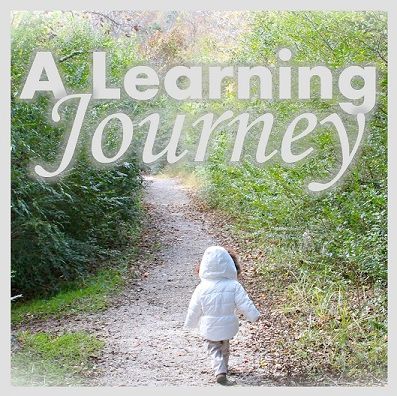






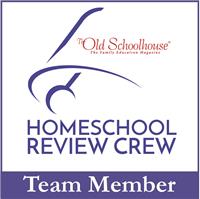
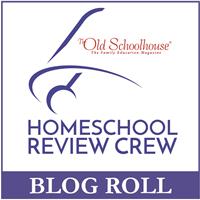





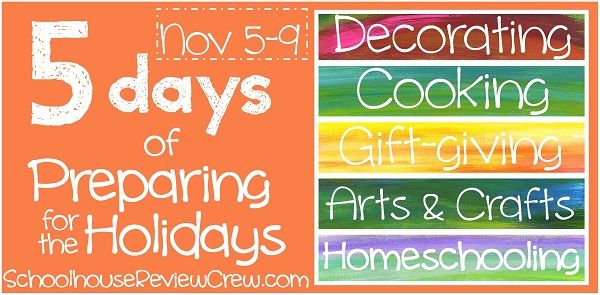
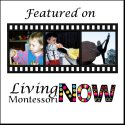


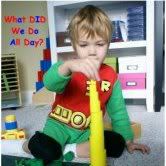



This is a great review! Looks and sounds like your sweet girl learned so much. Don't you just love when you can pair that with fun too? Fun memories made!
ReplyDeleteThank you Michele! I am so glad you stopped by my blog. We had a blast with this unit! I hope to use Homeschool Legacy products more often this year. I want to read the other Schoolhouse reviews and see which ones would work for her age with few adaptations.
ReplyDeleteI have the Revolutionary Ideas set and plan to get into it this year, especially after reading your blog. Thank you.
ReplyDelete